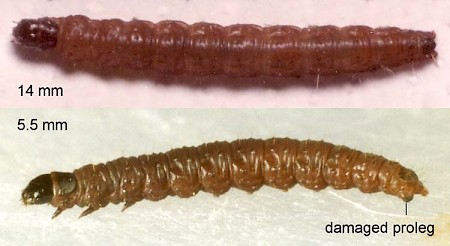Orthotaenia undulana

49.154 BF1087
Orthotaenia undulana
([Denis & Schiffermüller], 1775)
Wingspan 15-20 mm.
The moths emerge between May and July, occasionally later, and can be disturbed from the foliage, or attracted to light at night. The species is distributed widely throughout the British Isles in many habitats including woodlands, dunes and moors.
It is a polyphagous species, with a marked association with bilberry (Vaccinium myrtillus) on moors. Larvae also feed on bog-myrtle (Myrica), birch (Betula), pines (Pinus), juniper (Juniperus), wood-sage (Teucrium scorodonia), alder (Alnus), sallows (Salix), elm (Ulmus), Field maple (Acer campestre), sea-buckthorn (Hippophae), honeysuckle (Lonicera), currants (Ribes), bramble (Rubus), willowherbs (Epilobium), speedwells (Veronica), gipsywort (Lycopus), nettles (Urtica), and other trees, shrubs and herbs. The larva lives and pupates in a loose leaf spinning or folded leaf.
The larva has a black head with brown mouthparts. The prothoracic plate is black or pitchy brown with a paler anterior border. The thoracic legs are dark brown or blackish. Full-grown larvae are dark reddish brown, but earlier instars may lack the reddish hue. The pinacula are coloured as the body, or a little darker. The anal plate is dark brown or black, and there is an anal comb.
Other brown polyphagous larvae, which might be confused with Orthotaenia undulana include:
Celypha lacunana (lobe on posterior of anal plate),
Clepsis spectrana (pale pinacula and pale below spiracles)
Aphelia viburnana (head and anal plate light brown with black marks. frequent on Vaccinium).
Other larvae may resemble O. undulana, so rearing is advised for positive identification.

 UKMoths
UKMoths 





